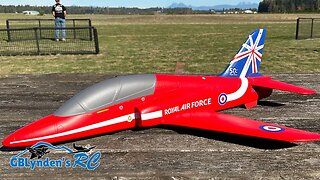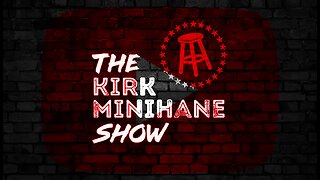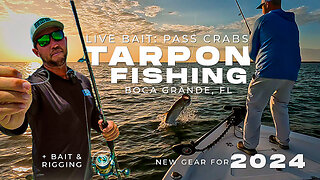Giant Sopwith Pup WWI Warbird Gas Powered RC Plane at Warbirds Over Whatcom with a Crash
This is not your ordinary RC plane folks. I thought this was a HUGE gas powered RAF SE5 WWI Warbird Radio Controlled Plane but it turns out that it is a Sopwith Pup. Parkzone makes a nice version of the SE5a, but not one of these! Of course, it would not be anywhere near close to this beast either way.
Link to similar RC Planes: https://bit.ly/3Uio952
The links in this description are affiliate links. They give me a small commission on sales which helps support the channel and keep it independent: https://www.amazon.com/shop/gblyndensrc
Visit https://www.gblynden.com/ to learn more about the hobby!
RC Accessories:
- Spektrum Smart Checker: https://bit.ly/329hl12
- Spektrum IX20 Radio: https://amzn.to/3qFTbHe
- Spektrum AR620 Receiver: https://bit.ly/3Aay021
Other Fun RC Planes:
- Arrows Husky 1800mm PNP STOL RC Plane: https://bit.ly/3v3qQM9
- Arrows BAe Hawk EDF Jet: https://bit.ly/2VY0HB7
- Arrows T-33 EDF Jet: https://bit.ly/3h3Z24a
- Arrows F-86 EDF Jet: https://bit.ly/3hIli3C
- Arrows F-15 EDF Jet: https://bit.ly/3Cxi10D
- Arrows RC MiG-29 EDF Jet: https://bit.ly/2ZDmjBY
- Arrows RC Marlin EDF Jet: https://bit.ly/2LUe4cN
- Arrows T-28 Trojan RC Warbird: https://bit.ly/2LOr3N4
- Arrows Bigfoot RC Plane: https://bit.ly/2TJliVh
The video contains a flight with a loop, crash, carnage recap, and an unexpected guest in the form of the WWII A-1 Skyraider from the Bellingham Flight Museum.
The Sopwith Pup was a British single seater biplane fighter aircraft built by the Sopwith Aviation Company. It entered service with the Royal Flying Corps and the Royal Naval Air Service in the autumn of 1916. With pleasant flying characteristics and good manoeuvrability, the aircraft proved very successful. The Pup was eventually outclassed by newer German fighters, but it was not completely replaced on the Western Front until the end of 1917. Remaining Pups were relegated to Home Defence and training units. The Pup's docile flying characteristics also made it ideal for use in aircraft carrier deck landing and takeoff experiments.
In May 1916, the RNAS received its first Pups for operational trials with "A" Naval Squadron. The first Pups reached the Western Front in October 1916 with No. 8 Squadron RNAS, and proved successful, with the squadron's Pups claiming 20 enemy machines destroyed in operations over the Somme battlefield by the end of the year.[2] The first RFC Squadron to re-equip with the Pup was No. 54 Squadron, which arrived in France in December. The Pup quickly proved its superiority over the early Fokker, Halberstadt and Albatros biplanes. After encountering the Pup in combat, Manfred von Richthofen said, "We saw at once that the enemy aeroplane was superior to ours."[3]
The Pup's light weight and generous wing area gave it a good rate of climb. Agility was enhanced by installing aileron on both wings. The Pup had half the horsepower and armament of the German Albatros D.III, but was much more manoeuvrable, especially over 15,000 ft (4,500 m) due to its low wing loading. Ace James McCudden stated that "When it came to manoeuvring, the Sopwith [Pup] would turn twice to an Albatros' once ... it was a remarkably fine machine for general all-round flying. It was so extremely light and well surfaced that after a little practice one could almost land it on a tennis court."[3] However, the Pup was also longitudinally unstable.
At the peak of its operational deployment, the Pup equipped only four RNAS squadrons (Nos. 3, 4, 8 and 9), and three RFC squadrons (Nos. 54, 46 and 66). By spring 1917, the type was already outclassed by the newest German fighters and the RNAS had replaced theirs, first with Sopwith Triplanes, and then Sopwith Camels. The RFC Pup squadrons on the other hand had to soldier on, in spite of increasing casualties, until it was possible to replace the last frontline Pups with Camels, in December 1917.
This one is a cool airplane in a line-up of other cool World War I and World War II planes like the Albatros D.Va, Neiuport 28, P-40, P-47, F4F, Supermarine Spitfire, BF-109, FW-109, P-51 Mustang, P-38, and P-39. It was so huge it could have been a B-17!
-
 3:28
3:28
GBLynden's RC
7 months ago4S Maiden | Arrows RC BAe Hawk 50mm EDF Jet
121 -
 LIVE
LIVE
SonnyFaz
1 hour agoSonny Debates OF Chug Jug Girl LVL 97
1,660 watching -
 1:06:35
1:06:35
The Kirk Minihane Show
4 hours ago420 Show
8.79K1 -
 31:28
31:28
Alexis Wilkins
14 hours agoBetween the Headlines with Alexis Wilkins: Wisconsin Supreme Court, Psaki's Book, Debates, Border
6.5K26 -
 LIVE
LIVE
Right Side Broadcasting Network
12 days agoLIVE REPLAY: President Trump Headlines the 153rd Annual NRA Meeting - 5/18/24
7,294 watching -
 35:50
35:50
TheTapeLibrary
1 day ago $0.02 earnedThe Disturbing True Story of The Amityville Horror
15.5K11 -
 8:13
8:13
Memology 101
1 day ago $0.03 earnedABSOLUTE CHAOS as MTG, AOC & Crockett trade insults during AG Garland Contempt Hearing
14.3K79 -
 11:26
11:26
Blue Siesta ASMR
1 day agoBETWEEN LIFE AND DEATH IN CANCUN
14.3K8 -
 15:36
15:36
Landed Fishing
1 day agoCatching Tarpon with Crab in Boca Grande! The Silver King Capital of the World New Fishing Gear 2024
14K1 -
 6:28
6:28
JoBlo Horror Originals
1 day agoWe Remember Roger Corman
6.37K2